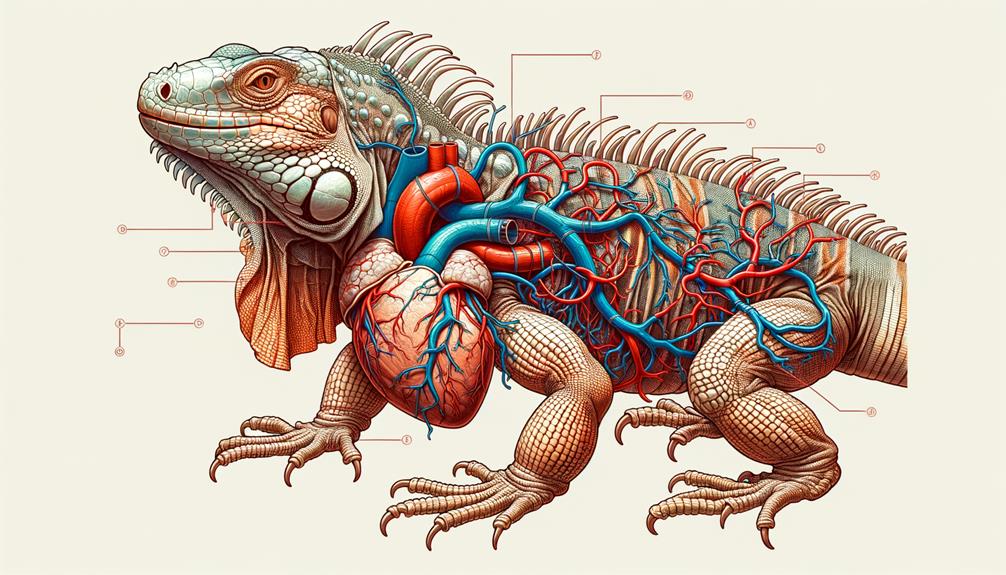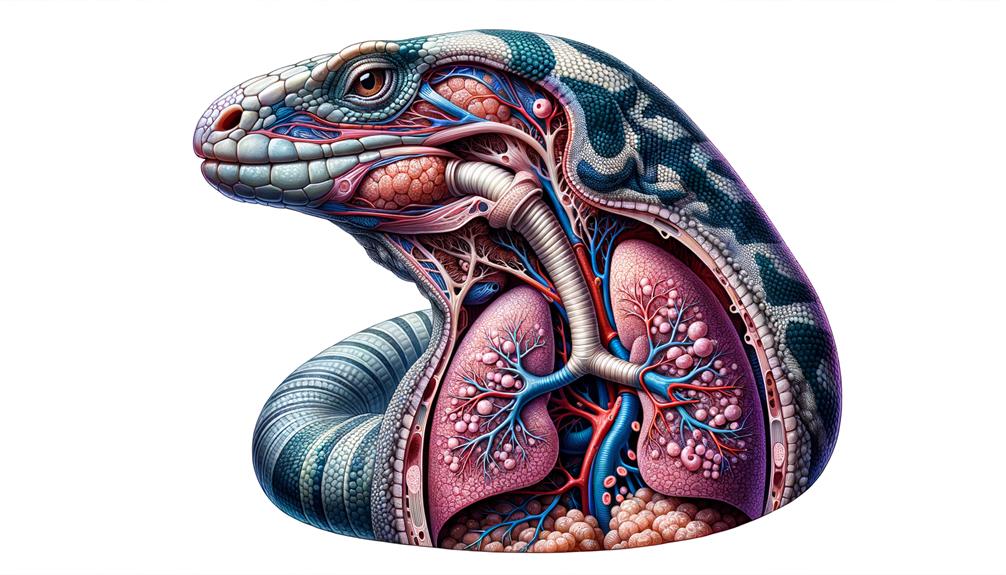When exploring reptilian skeletal structures, I delve into their unique adaptations, such as flexible spines and kinetic joints, which facilitate movement and feeding. Their streamlined skeletons and specialized limb designs showcase their energy efficiency and diverse locomotion capabilities. The absence of an otic notch in the skull and distinct jaw composition reveal their unique dentition, crucial for understanding their dietary habits. Vertebral columns, with specialized regions, provide mobility and stability. By examining these skeletal characteristics, we can trace the evolutionary journey of reptiles and their survival strategies. There's more to learn about how these adaptations balance form and function.
Key Takeaways
Reptilian vertebrae are specially crafted with concave and convex ends, allowing for greater support and flexibility.
The reptilian lower jaw is made up of multiple bones, with a primary bone dedicated to holding teeth.
Reptiles have evolved unique limbs and girdles that enable them to adapt to different modes of locomotion, reflecting their diverse habitats.
Snakes with venom have specialized fangs, either hollow or grooved, designed specifically for venom delivery – a feature distinct from other reptiles.
Turtles have replaced teeth with horny plates, an adaptation unique among reptiles that allows them to feed effectively.
Evolutionary Adaptations
Reptilian skeletal structures have evolved in remarkable ways to support their diverse locomotor capabilities, including swimming, crawling, and climbing. At the core of these adaptations lies the axial skeleton, which consists of the flexible spine and ribs. This flexibility enables the characteristic slithering and undulating movements seen in many reptile species, providing a foundation for their agility and speed.
The skulls of reptiles feature kinetic joints, which greatly increase their ability to open their mouths wide. This adaptation is particularly useful for consuming large prey, which is essential for their survival. The lightweight and streamlined nature of the reptilian skeleton further optimizes energy efficiency, which is crucial for their ectothermic metabolism.
The appendicular skeleton, comprising the limbs and girdles, is also crucial. These structures are meticulously adapted to support various modes of locomotion. For example, the limbs and girdles in climbing reptiles have specialized configurations that facilitate gripping and maneuvering through complex terrains. Similarly, the streamlined appendicular skeletons of aquatic reptiles allow for efficient swimming, minimizing drag and maximizing propulsion.
Through these evolutionary adaptations, reptiles demonstrate the intricate balance between skeletal structure and functional versatility, granting them the freedom to thrive in diverse environments. By examining these mechanisms, we can gain a deeper understanding of the evolutionary ingenuity that underpins reptilian survival and success.
Comparative Anatomy
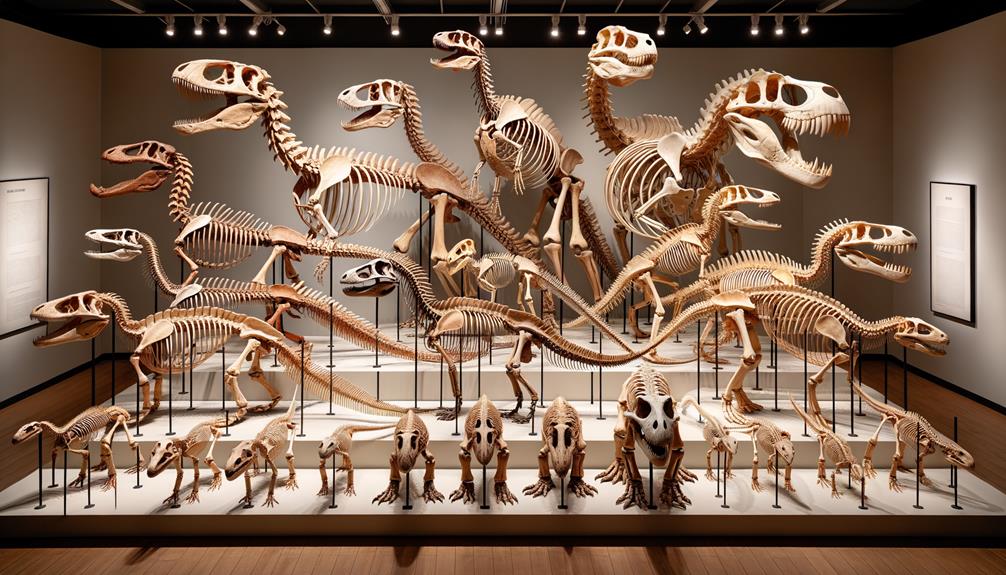
By examining the anatomy of various reptile species, we can uncover the distinct structural adaptations that enable their diverse ecological niches. In my study of reptiles, I've observed that their skeletal structures reveal much about their evolutionary journeys and survival strategies. The bone structure of reptiles varies greatly across species, reflecting their unique anatomical features and physiological demands.
As vertebrates, reptiles possess a backbone that supports their body and allows for mobility. Fossil records provide valuable insights into how these skeletal structures have evolved over millions of years. For instance, the limb adaptations in reptiles are particularly fascinating; they show how different species have evolved to thrive in their respective environments – whether it's the elongated limbs of arboreal lizards or the robust, paddle-like limbs of marine turtles.
In evolutionary biology, these anatomical variations are crucial for understanding reptilian physiology. By comparing the bone structures of different reptiles, I can trace the lineage and adaptation strategies that have allowed them to occupy a wide range of habitats. This comparative anatomy not only deepens our knowledge of reptiles but also broadens our understanding of vertebrate evolution as a whole.
Skull and Dentition
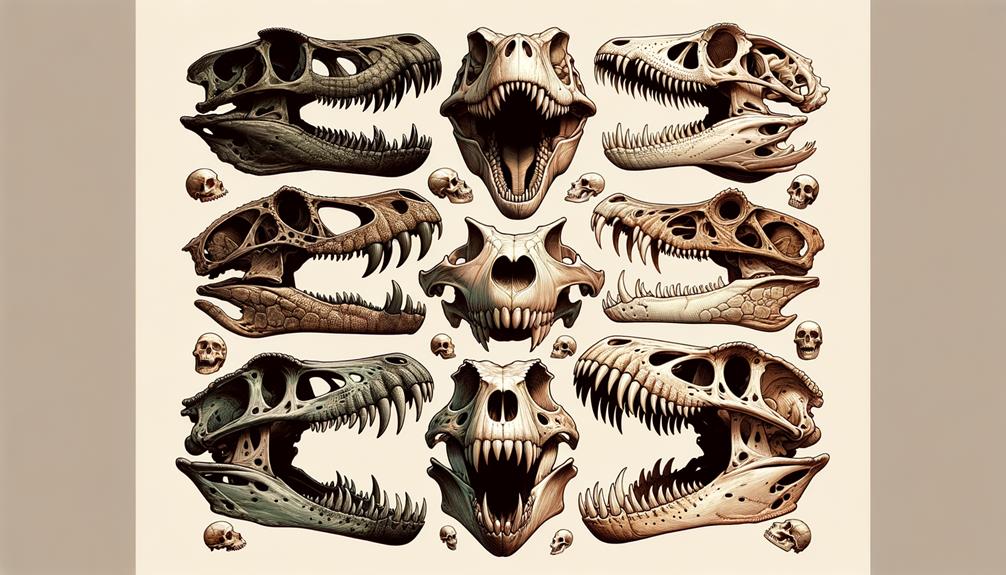
Examining the skull and dentition of various reptile species reveals a fascinating array of structural adaptations that reflect their ecological roles and evolutionary histories. Unlike mammals, reptiles lack the otic notch and small bones at the rear of the skull roof, highlighting the divergent paths these vertebrates have taken.
The reptilian lower jaw is complex, composed of multiple bones, with only one bearing teeth, in contrast to the single dentary bone found in mammals.
Reptilian teeth are generally less specialized than those of mammals. They are typically long and conical, lacking the division into incisors, canines, and molars seen in mammalian species. Venomous snakes have adapted their dentition to include hollow or grooved fangs, designed to deliver venom effectively, but the overall shape of their teeth remains similar to other snake teeth.
Turtles present an intriguing case, as they lack true teeth altogether. Instead, modern turtles use upper and lower horny plates to bite off food, showcasing the diversity in feeding strategies among reptiles and reflecting their varied ecological niches.
Limb Structures
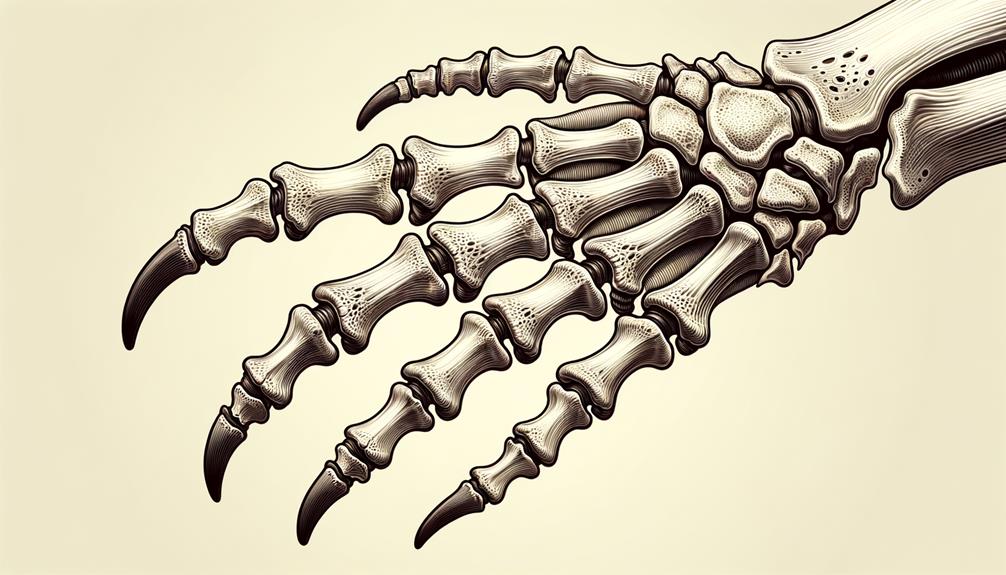
<|start_header_id|>
Vertebral Column
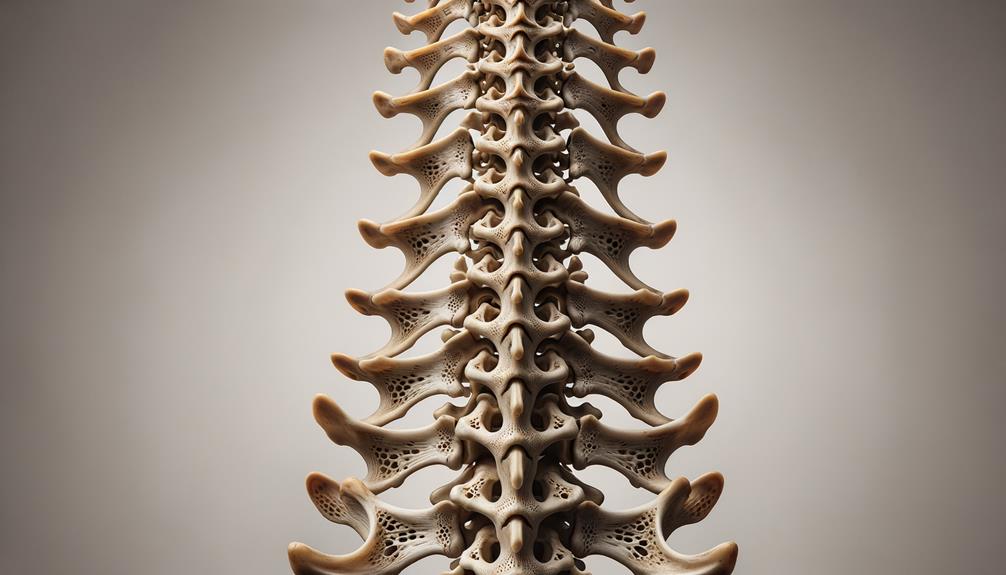
While reptiles showcase remarkable diversity in their limb structures, their vertebral columns provide the essential support and flexibility needed for their varied modes of locomotion and survival. The reptilian vertebral column is composed of numerous vertebrae, which are vital for both structural support and movement.
Reptilian vertebrae often feature a unique design, where the anterior end is concave and the posterior end is convex, allowing for enhanced flexibility. This design ensures a stable yet flexible vertebral column, crucial for the reptile's mobility. Additionally, pre- and postzygapophyses – interlocking processes between adjacent vertebrae – add further stability and support.
The vertebral column is divided into several regions, including cervical, thoracic, lumbar, sacral, and caudal. Each region has specialized vertebrae that contribute to the overall function of the column. For instance, the cervical vertebrae provide neck flexibility, while the thoracic vertebrae support the rib cage and facilitate breathing. The caudal vertebrae, found in the tail, play a significant role in balance and locomotion, particularly in species with long tails like snakes, which can have over 300 vertebrae.
Evolutionary Relationships
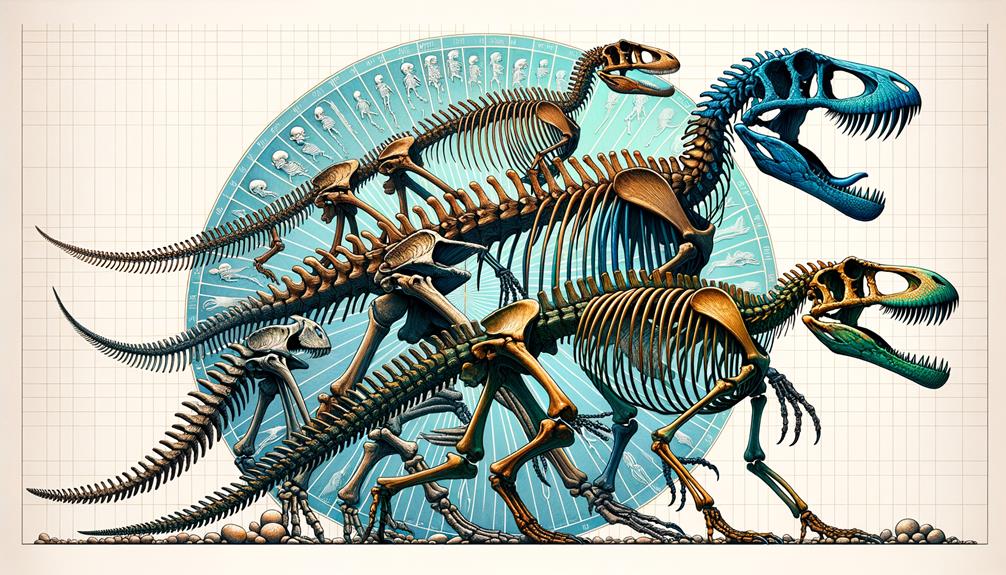
<|start_header_id|>
Frequently Asked Questions
What Is Unique About Reptile Skeletons?
What's unique about reptile skeletons is that they have a jointed spine and numerous vertebrae, which allows them to slither and make undulating movements. Their skulls also have a special feature called kinesis, which enables them to open their mouths wide, and their jaws are made up of multiple bones, unlike those of mammals.
What Is the Importance of Skull in Reptilian Classification?
When classifying reptiles, the skull's structure holds significant importance. The arrangement of its bones and kinetic joints reveals vital information about a species, shedding light on its evolutionary adaptations, particularly in feeding strategies.
What Are the Five Major Modern Reptile Groups?
The five major modern reptile groups are Crocodilia, Squamata, Testudines, Rhynchocephalia, and Sphenodontia. From aquatic predators to shell-bearing turtles, these groups showcase incredible diversity. Each group's unique adaptations have enabled them to thrive in their respective ecological niches, demonstrating their evolutionary success.
What Are the Body Parts of a Reptile?
When examining a reptile's body, I focus on its key components: head, neck, trunk, tail, and limbs. These parts, combined with specialized features like scales and claws, enable reptiles to thrive in diverse environments.


